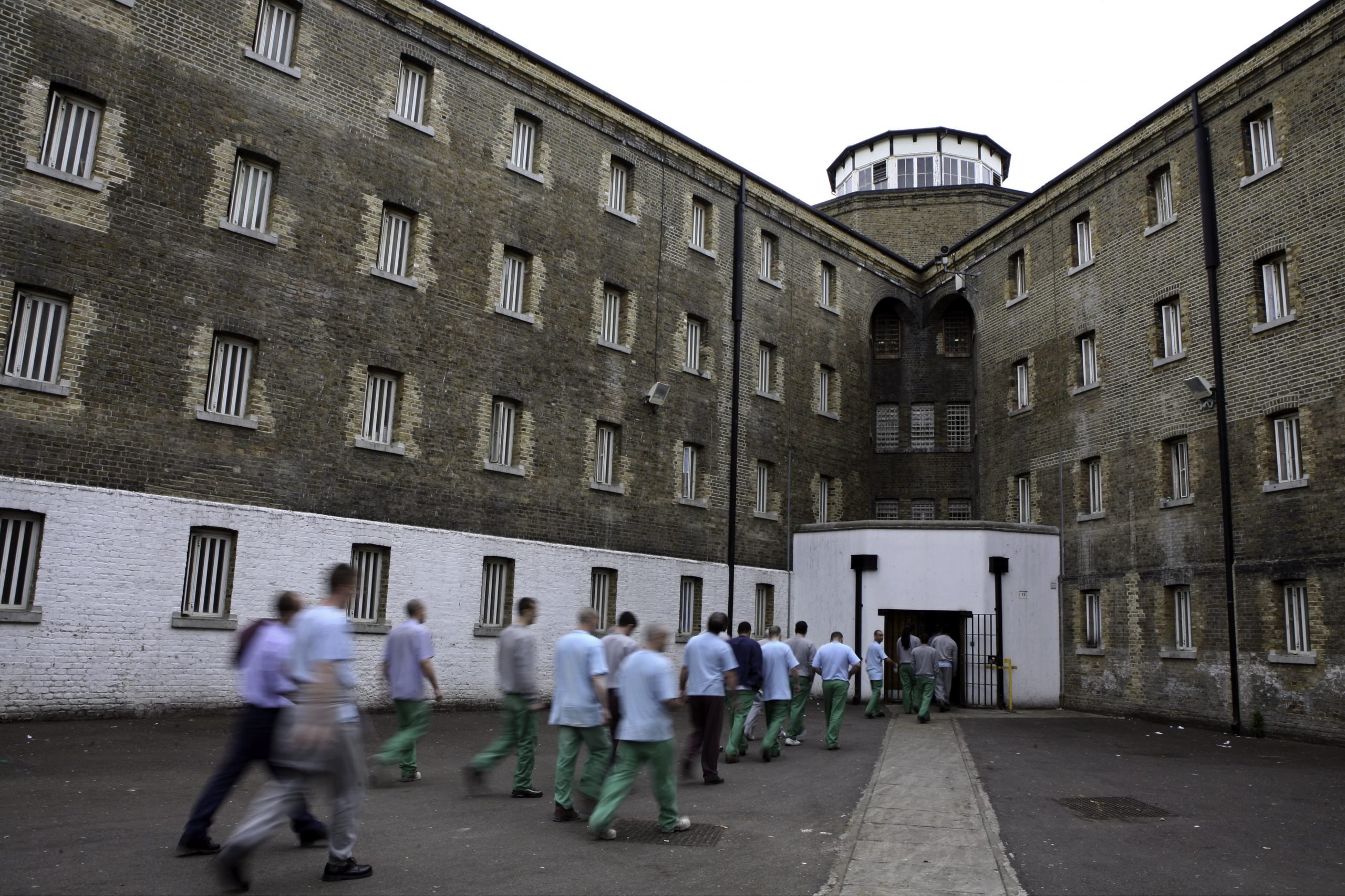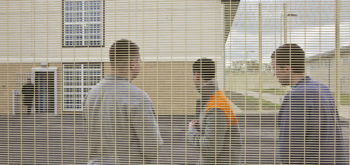Four ‘supersize’ prisons to be built in England and Wales

Prisoners return from their jobs to their wings for lunch at Wandsworth prison. Pic by Andy Aitchison as used in Proof magazine, issue 2
Plans four new ‘supersize’ prisons in England and Wales creating around 5,000 modern prison places, were announced yesterday by the Secretary of State for Justice Liz Truss. The new facilities, to be located at Full Sutton in East Yorkshire, Hindley in Wigan, Rochester in Kent and Port Talbot in South Wales, form part of a £1.3bn investment in the UK’s crisis-ridden system.
While the capacities of the new prisons is subject to the planning process, it is expected that each one will have the capacity to hold over 1,000 inmates consolidating a new generation of ‘supersized’ prisons.
‘We cannot hope to reduce reoffending until we build prisons that are places of reform where hard work and self-improvement flourish,’ said Truss. ‘Outdated prisons, with dark corridors and cramped conditions, will not help offenders turn their back on crime – nor do they provide our professional and dedicated prison officers with the right tools or environment to do their job effectively.’
The proposed jails form part of a wider building programme to create up to 10,000 modern prison places by 2020. The scheme would see nine new prisons being built nationwide, which would, the Ministry of Justice reckons, create over 2,000 jobs. It represents a marked change by the government in their approach to the construction and architecture of our prisons. Until now, the majority of prisons which have been built in recent decades had an original capacity of approximately 600 inmates. However, the numbers of prisoners being held in these jails has grown dramatically in the last few years. Over 1,560 prisoners are currently being held in HMP Wandsworth designed to house around 1,000. Across England and Wales, nearly 30 prisons nationwide now hold over 1,000 prisoners each.
In 1990, as part of his ground-breaking report following the Strangeways prison riots, Lord Woolf recommended that no prison hold more than 400 inmates. He said: ‘The evidence suggests that if these figures are exceeded, there can be a marked fall-off in all aspects of the performance of a prison.’ The last Labour government also proposed a series of ‘Titan’ prisons, which would each hold 2,500 prisoners, but was forced to drop the scheme in the face of cross-party opposition.
According to Council of Europe annual penal statistics reported earlier this month, England and Wales have the highest incarceration rate in Western Europe. While the report shows that the prison population is within ‘operational capacity’, it is far above the ‘certified normal accommodation’ which is a measure of ‘good, decent’ accommodation. On their reckoning one in four prisoners are ‘doubled up’ in single occupancy cells.
In the second reading of the Prisons and Courts Bill on Monday, Bob Neill, chair of the House of Commons’ justice committee, pointed out that ‘we incarcerate more people per 100,000 of population than virtually any of our western European comparators’. ‘We incarcerate more than 140 people per 100,000 of population, while France incarcerates about 98. Our rate of incarceration is practically double that of Germany, a country that is also very similar to us in many other respects. That cannot be because of some greater inherent criminality on the part of the British people. It is simply that we do not have a sufficiently sophisticated suite of alternatives to custody to provide robust and publicly credible options, so sentencers often feel obliged to fall back on custody more than they do elsewhere.’
The plans have been met with dismay from penal reformers. ‘The massive investment in new prisons is not matched by a credible plan to reduce our reckless overuse of prison in the first place,’ said Peter Dawson, director of the Prison Reform Trust. ‘The prison estate certainly needs an overhaul, but reducing demand would mean closing prisons, not opening them. The government has admitted that it has no idea when overcrowding will cease, and this announcement takes us no closer to an answer to that crucial question.’
‘We need modern prisons fit for the modern age,’ commented shadow justice secretary, Richard Burgon. ‘But simply replacing one prison with another prison doesn’t deal with the overcrowding crisis. No amount of press releases can distract from that.”






